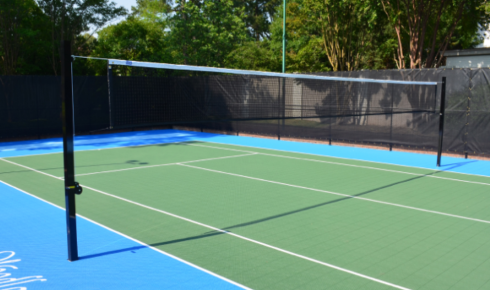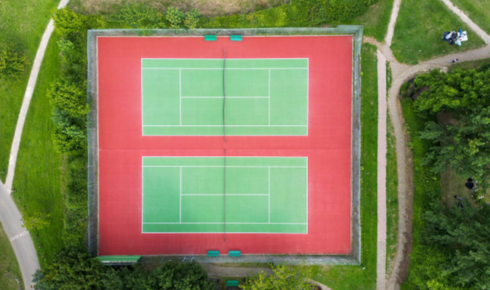
Setting up a roller skating rink—whether for recreation, training, or professional use—requires careful planning, especially when it comes to choosing the right skate floor. The floor forms the foundation of safety, performance, and user experience. A well-installed surface ensures smooth gliding, minimizes injuries, and withstands heavy foot and wheel traffic. In this detailed guide, we’ll explore the most commonly used roller skating rink floor materials, their pricing, features, and installation tips to help you choose the best flooring for your needs.
Why Choosing the Right Skate Floor Matters
A good skating surface should offer a balance of grip and glide. Too slippery, and you risk accidents; too rough, and skaters can’t move freely. Whether it’s a community rink, a school recreation center, or a private commercial arena, your flooring decision affects:
- Skater safety
- Durability and wear resistance
- Maintenance and cleaning effort
- Long-term costs
For indoor skating rinks, noise control and shock absorption are also essential. For outdoor rinks, UV resistance and weather durability become top priorities.
Popular Roller Skating Rink Floor Materials
Let’s explore the top options available in India and globally for roller rink flooring:
1. Vinyl Sports Flooring
Vinyl flooring is one of the most widely used materials in indoor roller rinks. It provides a smooth surface that’s soft enough to absorb shocks but firm enough for speed.
Pros:
- High impact resistance
- Anti-slip surface
- Easy to clean and maintain
- Available in various designs and colors
Cons:
- Not ideal for outdoor use without protection
- May require adhesive-based installation
Estimated Price: ₹350–₹600 per sq. meter
2. Synthetic Acrylic Flooring
For outdoor skating rinks, synthetic acrylic coating is a top choice. Applied over concrete, this surface is known for its resilience and weather tolerance.
Pros:
- UV-resistant and weatherproof
- Non-slip finish
- Customizable in colors
- Low maintenance
Cons:
- Needs a stable and well-leveled base
- Requires resurfacing after a few years
Estimated Price: ₹300–₹500 per sq. meter
3. Modular Interlocking Tiles
Modular tiles made of polypropylene or rubberized plastic are growing in popularity for both indoor and outdoor setups. These tiles snap together and can be installed without adhesives.
Pros:
- Portable and reusable
- Minimal subfloor preparation
- Water-resistant and durable
- Quick to install
Cons:
- Initial cost can be higher than acrylic
- Less seamless than poured surfaces
Estimated Price: ₹400–₹700 per sq. meter
4. PU-Coated Sports Flooring (Optional Premium Option)
PU (polyurethane) sports floors are high-performance options found in advanced outdoor skating centers. While not the cheapest, they provide professional-level durability.
Pros:
- Seamless, cushioned finish
- High resistance to abrasion and wear
- Excellent grip and skid control
Cons:
- Higher upfront cost
- Requires expert installation
Skating Rink Flooring Prices: What Affects the Budget?
When estimating your skating rink flooring prices, consider the following cost-influencing factors:
- Floor Area: Larger rinks will naturally require more material and labor.
- Material Quality: Higher-grade materials with UV or anti-microbial protection will cost more.
- Installation Type: Floating floors like modular tiles are quicker and cheaper to install.
- Surface Design: Logos, markings, and color customization will increase costs.
- Subfloor Preparation: Any slope correction or moisture sealing may add to the budget.
Installation Tips for a Long-Lasting Skate Floor
Proper installation is just as important as the material you choose. Here are essential tips to ensure your roller rink flooring performs at its best:
1. Prepare a Solid Sub-Base
- Ensure the surface is flat, clean, and dry.
- For concrete bases, consider moisture barriers if installing vinyl or PU.
2. Follow Manufacturer Guidelines
- Use recommended adhesives or locking mechanisms.
- Maintain room temperature and humidity (especially for PU and vinyl).
3. Allow Proper Curing Time
- Avoid usage for 24–72 hours (depending on material) after installation.
- Ensure no heavy loads or sharp equipment are placed during this period.
4. Perform Regular Maintenance
- Sweep and mop the surface daily.
- Use approved cleaning products only.
- Inspect for wear and tear, especially at corners and seams.
Best Skate Floor for Your Application
| Application Type | Recommended Flooring | Why It Works |
| Indoor Recreational Rinks | Vinyl or PU Sports Flooring | Comfortable, impact-absorbing, slip-resistant |
| Outdoor Public Rinks | Synthetic Acrylic Flooring | UV-proof, durable, and low-maintenance |
| Multi-Use Community Centers | Modular Interlocking Tiles | Versatile, portable, and budget-friendly |
| Semi-Professional Rinks | PU-Coated Concrete | Long lifespan and professional finish |
Conclusion
Choosing the right skating rink floor material is key to building a safe and enjoyable environment for all users. Whether you’re on a tight budget or aiming for professional standards, there’s a solution to match your needs. Evaluate your space—indoor or outdoor, temporary or permanent—and compare flooring options not just by cost, but by performance, lifespan, and maintenance.
When planned properly, your skate floor will offer years of smooth glides, spins, and safe landings for everyone who steps onto it.


